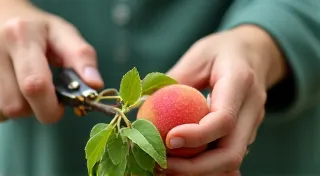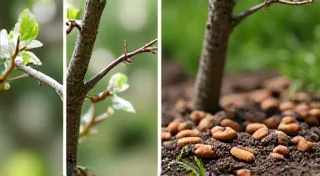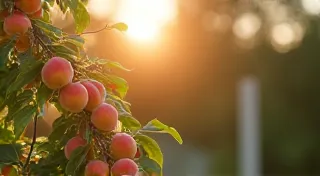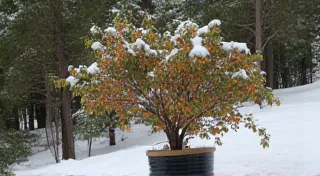Choosing the Right Dwarf Fruit Tree Variety for Your Container Garden
Not all dwarf fruit trees are created equal! Selecting the right variety is crucial for success when growing fruit trees in containers. This guide breaks down popular varieties like dwarf citrus, apples, peaches, and pears, focusing on their container suitability, growth habits, chill hour requirements, and yield potential. We'll help you select the perfect dwarf fruit tree to thrive in your container garden, considering your climate and space limitations. Learn about self-pollinating vs. requiring pollinators.
Understanding Dwarf Fruit Tree Types
The term "dwarf" can be misleading. While these trees are smaller than standard varieties, they still require substantial container space and care. There are generally three categories of dwarf fruit trees: semi-dwarf, dwarf, and ultra-dwarf. Understanding these distinctions will inform your choices. A key element of success hinges on providing them with the right environment, which includes appropriate soil, watering, and fertilizing – factors that can significantly impact their health and fruit production. For a comprehensive look at these essentials, check out our guide on essential container gardening tips for dwarf fruit trees.
Dwarf Citrus Trees
Citrus trees are incredibly popular for container gardening, bringing a taste of the tropics to even the smallest spaces. However, they need ample sunlight (at least 6-8 hours daily). Proper care is critical, and even the most resilient varieties can succumb to issues like pests and diseases. Managing these challenges is an ongoing process for any container gardener, and understanding potential problems early is key.
- 'Improved Meyer' Lemon: Arguably the easiest citrus to grow in containers. It’s partially self-fertile, meaning it produces fruit with fewer pollinators, and offers a sweeter, less acidic flavor than standard lemons.
- 'Calamondin Orange: This variety thrives in containers and offers a lovely fragrance. It’s not strictly an orange but a hybrid with a tart, citrusy flavor often used in cooking.
- 'Kumquat': Kumquats are unique because the entire fruit, peel and all, is edible! They are relatively compact and do well in containers.
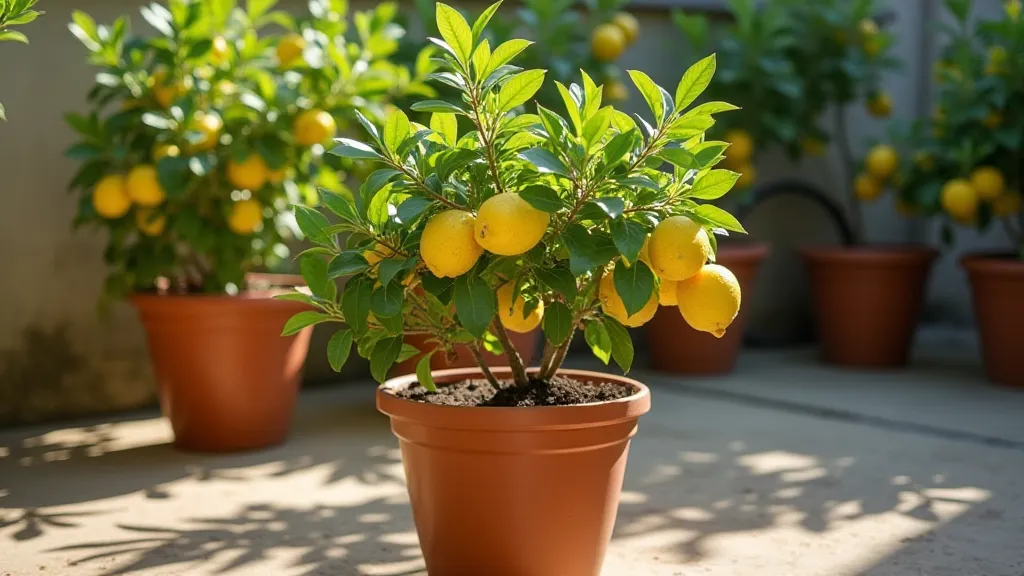
Dwarf Apple Trees
Growing apples in containers presents a chill hour challenge. Chill hours refer to the number of hours below a certain temperature (usually 45°F) that a tree needs to break dormancy and flower properly. Choose varieties suited to your region's chill hour count. The success of your apple tree in a container hinges not just on the variety selected but also on how you care for it through the colder months. Different regions experience varying climate conditions, making overwintering a crucial aspect of dwarf fruit tree cultivation. If you're unsure how to best protect your tree during the winter, our guide on overwintering your dwarf fruit trees in containers provides a regional approach.
- 'Gala': A popular and relatively easy-to-grow dwarf apple, known for its sweet flavor.
- 'Honeycrisp': Highly prized for its crisp texture and sweet-tart taste. It typically needs more chill hours.
- 'Fuji': Another sweet and popular variety that can be successfully grown in containers.
Pollination: Most apple varieties require cross-pollination, meaning you’ll need a second apple tree of a different variety to ensure fruit production. Research compatible pollinator varieties for your chosen apple tree.
Dwarf Peach Trees
Peach trees can be quite rewarding in containers, but they are susceptible to pests and diseases. Good air circulation is vital. Regular maintenance and preventative measures are often necessary to keep your peach tree healthy and productive. The challenges are similar across all dwarf fruit trees, but with peaches, the importance of pruning cannot be overstated; proper techniques ensure a bountiful harvest.
- 'Bonanza': A popular, self-pollinating dwarf peach tree that produces abundant, sweet fruit.
- 'Elberta': A classic peach variety known for its juicy, flavorful fruit.
Pruning: Peaches require regular pruning to maintain their shape and encourage fruit production. Research proper pruning techniques for dwarf peach trees.
Dwarf Pear Trees
Pears are a bit more challenging than apples and peaches in containers, but with proper care, they can be successful. Like apples, they often require pollination. Creating a beautiful and productive miniature orchard in containers is a rewarding endeavor, but requires careful planning and design considerations. From selecting the right combination of trees to arranging them aesthetically, every detail contributes to the overall success. For inspiration and guidance on creating your own miniature orchard, explore our article on creating a miniature orchard in containers.
- 'Bartlett': A classic pear variety known for its sweet flavor and juicy texture. Requires a pollinator.
- 'Orient': Considered one of the more reliable pear varieties for container growing. Often requires a pollinator.
Container Size: Dwarf fruit trees still need significant container space. A minimum of 15-25 gallon containers is generally recommended. Ensure the container has adequate drainage holes.

Self-Pollinating vs. Requiring Pollinators
It’s essential to understand whether the variety you choose is self-pollinating (meaning it doesn't need another tree to produce fruit) or requires a pollinator. Check the variety description carefully before purchasing. If pollination is required, ensure you have a compatible pollinator tree nearby or are willing to hand-pollinate. The specific challenges and solutions vary between fruit types. Dealing with pests and diseases in container-grown dwarf fruit trees is a common concern and requires proactive measures. For more detailed advice on identifying and managing these issues, read our guide on dealing with pests & diseases in container-grown dwarf fruit trees.
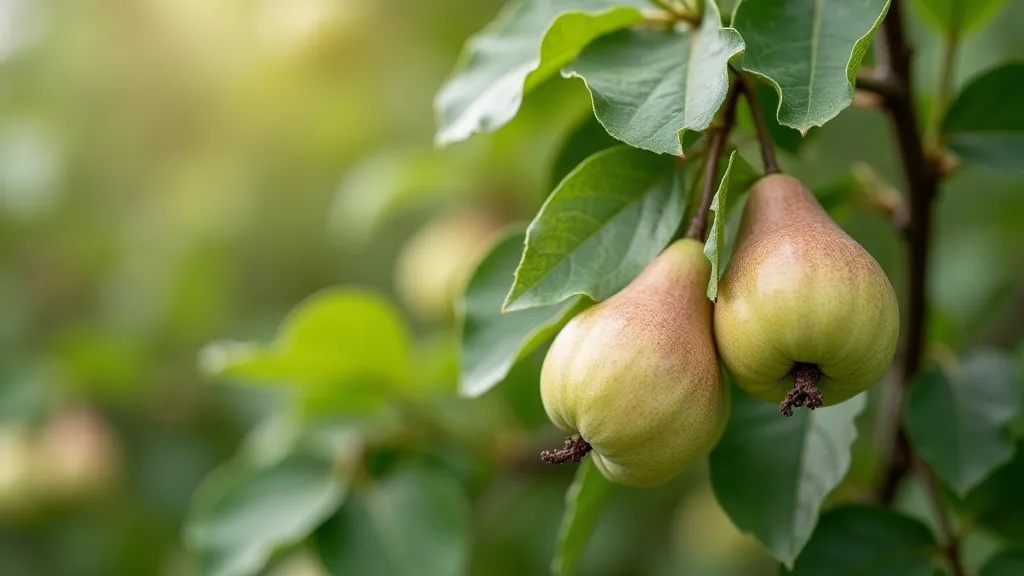
Choosing the right dwarf fruit tree variety for your container garden requires careful consideration of several factors. From understanding the different categories of dwarf trees to matching varieties with your climate and available space, there’s a lot to learn. Don't underestimate the importance of proper soil, adequate watering, and consistent fertilizing – these are the cornerstones of healthy growth and abundant fruit production. For more comprehensive guidance, revisit our earlier article on essential container gardening tips for dwarf fruit trees. By carefully considering these factors and selecting the right dwarf fruit tree variety, you can enjoy a bountiful harvest from your container garden!
